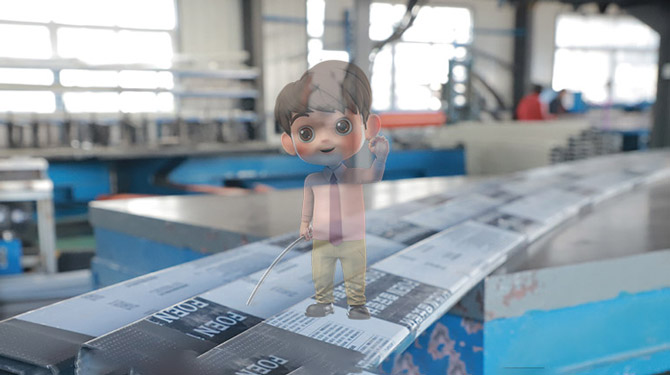Metal Bending Techniques: A Comprehensive Guide for Engineers and Designers
Metal bending is a fundamental process in the field of manufacturing and fabrication, playing a crucial role in the production of various components used across multiple industries. This comprehensive guide aims to provide engineers and designers with an in-depth understanding of metal bending techniques, their applications, and how to select the appropriate method for specific projects.
Metal bending involves the process of deforming a metal workpiece along a defined axis, creating a specific angle or curve. This process is essential for producing parts such as brackets, frames, and enclosures that are integral to machinery, vehicles, and architecture. Understanding the various techniques and their characteristics is vital to achieving the desired outcome while maintaining material integrity.
Common Metal Bending Techniques
1.Air Bending
Air bending is one of the most widely used methods in metal bending. In this technique, the metal is placed on a die, and a punch applies force to bend the metal at a predetermined angle. The key advantage of air bending is its versatility; it can accommodate various thicknesses and types of metal without the need for custom dies. However, it requires precise calculations and adjustments to achieve the desired angle, as the final bend angle is influenced by factors such as the material's springback.
2.Bottom Bending
Bottom bending, also known as die bending, involves a more defined process where the metal is forced into a specific shape using a die that matches the desired bend. This technique provides greater accuracy and consistency in the final product, making it ideal for high-volume production where tight tolerances are essential. However, it requires more complex tooling and is often more expensive than air bending.

3.Roll Bending
Roll bending utilizes a set of rollers to gradually shape the metal into a curve or arc. This method is commonly used for producing cylindrical shapes, such as pipes and tubes, and is particularly effective for larger sheets of metal. Roll bending allows for continuous production and is often used in the construction and automotive industries.
4.Stamping
Stamping is a high-speed bending technique that involves pressing a metal sheet into a die with a stamping press. This method is highly efficient for mass production, allowing for intricate shapes and designs to be created quickly and with high precision. Stamping is widely used for products such as automotive parts, appliances, and electronic housings, where uniformity is crucial.
5.Hydraulic Bending
Hydraulic bending utilizes hydraulic pressure to bend metal, offering significant force and control. This technique is particularly beneficial for thicker materials and allows for complex bends that may be challenging with other methods. Hydraulic bending machines can be adjusted to accommodate various angles and shapes, making them versatile tools in any fabrication shop.
6.Laser Bending
Laser bending is an advanced technique that employs a focused laser beam to heat specific areas of the metal, causing it to bend. This method allows for precise control over the bending process and can produce intricate shapes with minimal material waste. Although it requires significant investment in equipment, laser bending is gaining popularity due to its speed and accuracy, especially in high-tech industries.
When selecting a metal bending technique, it is essential to consider the type of material being used. Different metals exhibit varying properties, such as ductility, tensile strength, and springback characteristics. Common metals used in bending include:
-Steel: Known for its strength and versatility, steel is widely used in construction and manufacturing.
-Aluminum: Lightweight and corrosion-resistant, aluminum is often used in automotive and aerospace applications.
-Brass: With excellent corrosion resistance and aesthetic appeal, brass is commonly used in decorative components.
-Stainless Steel: Renowned for its corrosion resistance, stainless steel is ideal for applications requiring hygiene and durability.
Engineers and designers must also take into account design factors when planning a metal bending project. Key considerations include:
-Bend Radius: The bend radius should be adequately sized to prevent cracking or deformation of the metal.
-Angle Tolerance: Precise angle tolerances are crucial for ensuring that parts fit together correctly in assembly.
-Material Thickness: The thickness of the material influences the choice of bending method and the required tooling.
-Springback: Understanding how much the material will spring back after bending is essential for achieving accurate angles.
Metal bending is a vital process in the manufacturing industry, and selecting the right technique is critical for achieving high-quality results. By understanding the various metal bending techniques, their advantages and limitations, and the factors affecting the bending process, engineers and designers can make informed decisions that enhance product performance and efficiency. Whether working with simple components or complex geometries, mastering metal bending techniques is essential for success in today’s competitive landscape.
27
2025-06
Number of visitors:1
HOT NEWS
-
From Design to Execution: How Profile Bending Transforms Architectural and Industrial Projects
2025-11-10
-
Innovations in Door and Window Bending Processing: Key Techniques for Enhancing Product Quality
2025-11-01
-
A Guide to Equipment Selection and Maintenance for Precision Bending and Drawing Processes
2025-10-24
-
The Application and Challenges of Precision Bending in the Aerospace Field
2025-10-16




 English
English Chinese
Chinese Japan
Japan German
German

 LIST
LIST
